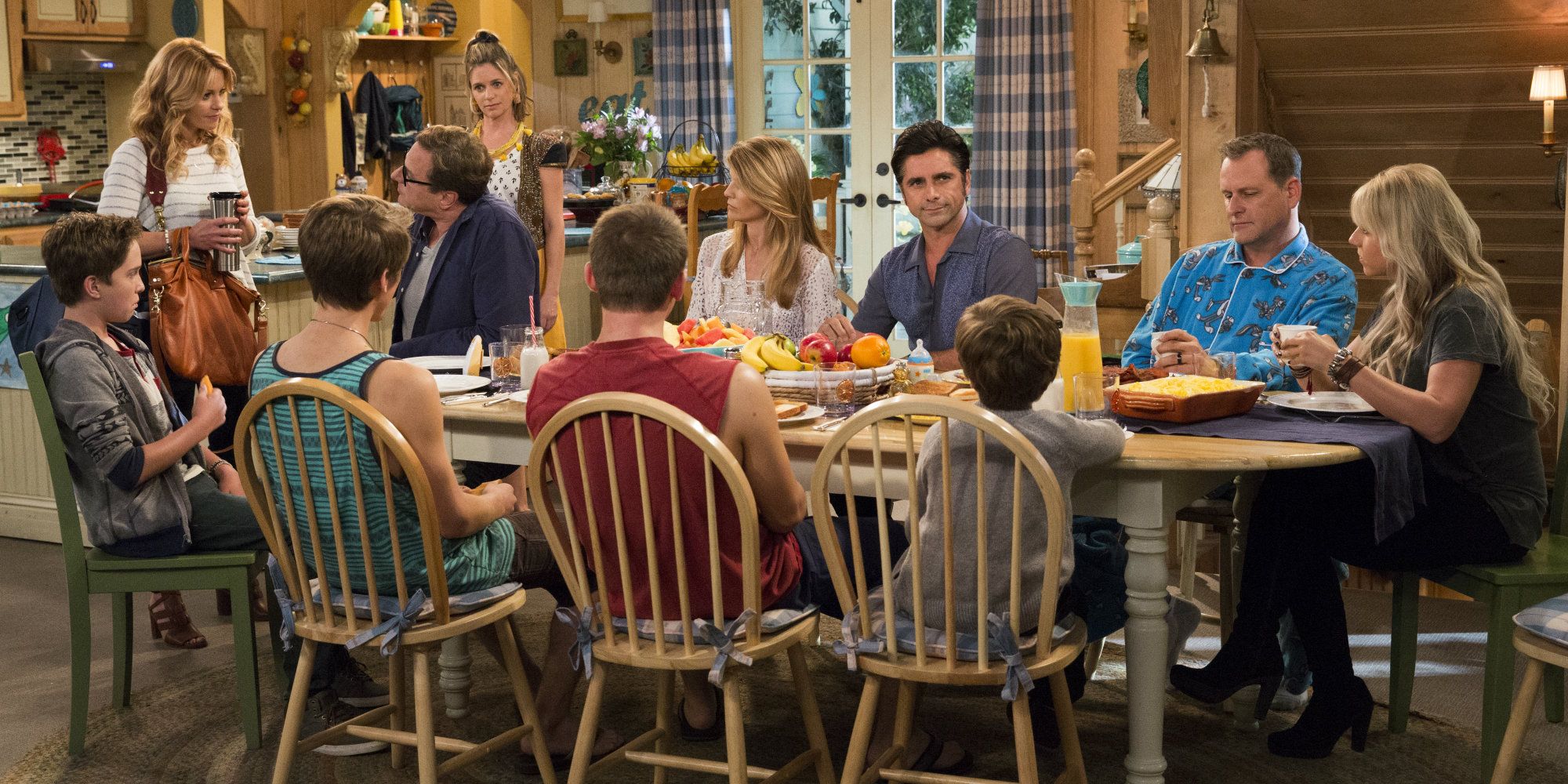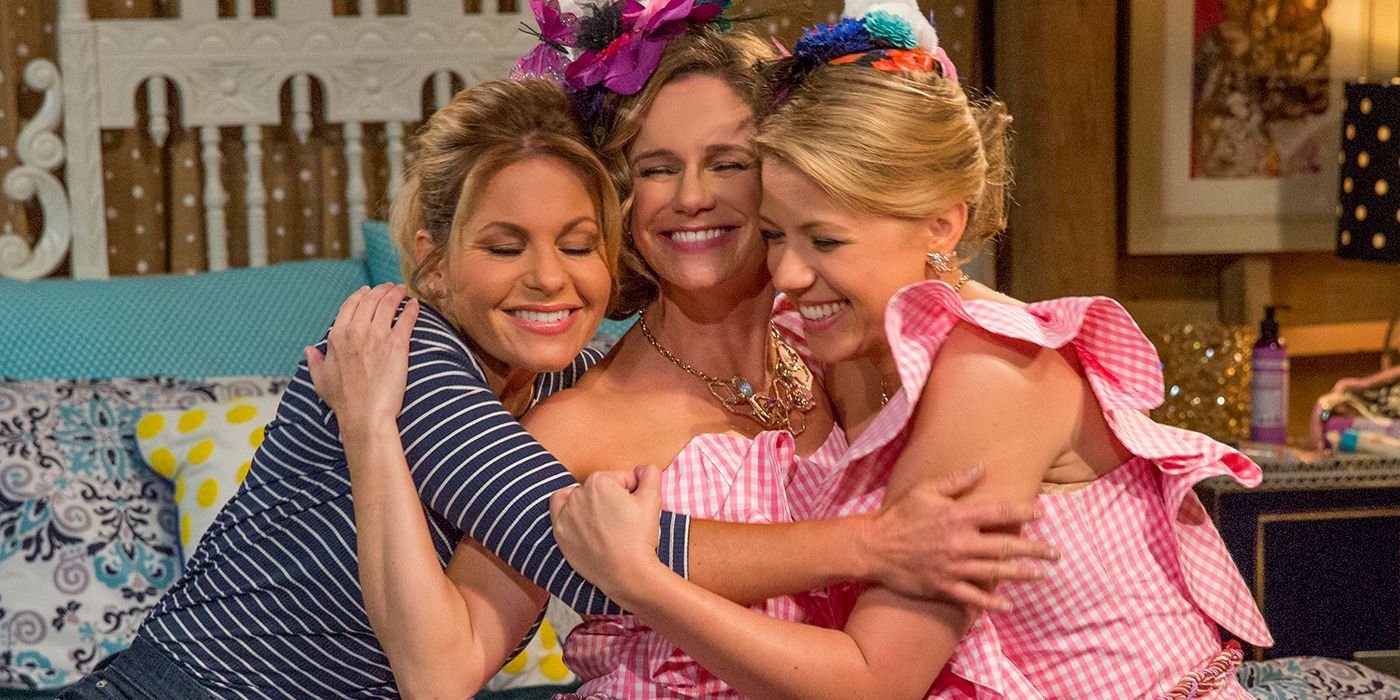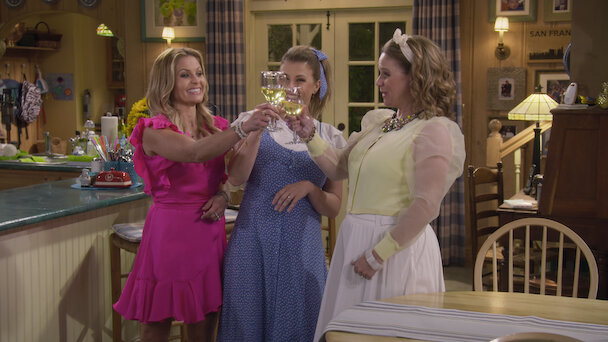
Between its inherited Full House fanbase and newly-acquired viewers, Fuller House has had a loyal following, yet Netflix canceled it after five seasons. Debuting in 2016, the sequel series to the classic family sitcom re-opened the iconic Tanner home to the public. This time, the focus was on Danny’s (Bob Saget) two eldest daughters – DJ (Candace Cameron-Bure) and Stephanie (Jodie Sweeting), as well as their long-time neighbor and friend, Kimmy Gibbler (Andrea Barber).

Fuller House’s premise mirrored a lot of elements from its parent series. All grown up with their own lives, the three girls with their respective families moved into the Tanners’ home following the death of DJ’s first husband. Meanwhile, despite not being main cast members, Danny, Jesse (John Stamos), and Joey (Dave Coulier) regularly visited them to check up on how they were doing, which added to the sitcom’s nostalgia. Over the course of five seasons, Fuller House tackled the Tanner extended family’s adventures, leading to the heartwarming triple-wedding series finale.

It was on the heels of the show’s season 4 premiere that it was announced Fuller House season 5 would be its last. Split into two halves, Fuller House season 5 part 1 released in December 2019, with the remaining episodes coming in June 2020. The thing is, the series’ producers were expecting at least another season order, even saving plot lines for Fuller House season 6. This means there was a miscommunication between Netflix and the Fuller House crew, so why did the streaming giant really pull the plug on the reboot earlier than presumed? The cancellation is more likely because the show was unable to grow its audience significantly, despite its initial popularity.
While Netflix is notoriously secretive about their audience rating, a report from Business Insider claims Fuller House suffered a massive viewership drop after season 1, which makes sense considering the series received mostly negative reactions from critics. It’s possible that the general public was initially intrigued by what the revival had to offer, but after a lackluster season 1 that leaned heavily on its parent show, they decided that it wasn’t for them, ultimately not returning for subsequent seasons. This is a bummer considering Fuller House got considerably better as the years went by – it gradually found its footing, coming out of the shadow of Full House.

After most casual audiences abandoned Fuller House at the end of season 1, the show was fueled by the solid fanbase it inherited from Full House. These are viewers who have personal attachments to the Tanner girls and Kimmy, potentially because they grew up with them. Full House’s main selling point was its young cast; they were front and center in almost all episodes and the sitcom did a great job tracking their growth. Seeing DJ, Stephanie, and Kimmy all grown up and now dealing with more adult issues in Fuller House continued that trend, making the offshoot appealing to the same community that supported the original show. That said, while Full House’s base sustained Fuller House for an additional four more years, Netflix didn’t think it was enough to merit another season for the sequel because of its inability to expand its reach.
What’s unique about Fuller House is that it has something to offer for both old and young viewers, meaning it had the potential to become one of Netflix’s biggest shows. Granted it didn’t put as much focus on their young cast as Full House did in its earlier years, but with DJ, Stephanie, and Kimmy all married, that could change in the theoretical Fuller House season 6 as there can be more children-centric episodes. Unfortunately, fans will never know if this will help grow the its audience with the sitcom now canceled.
